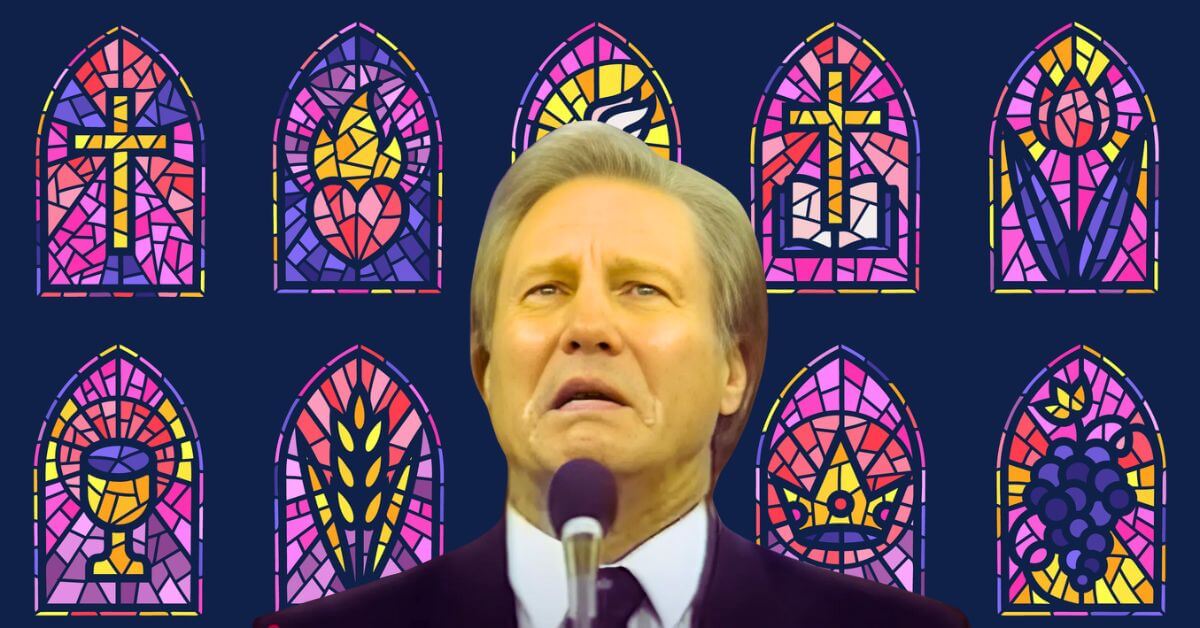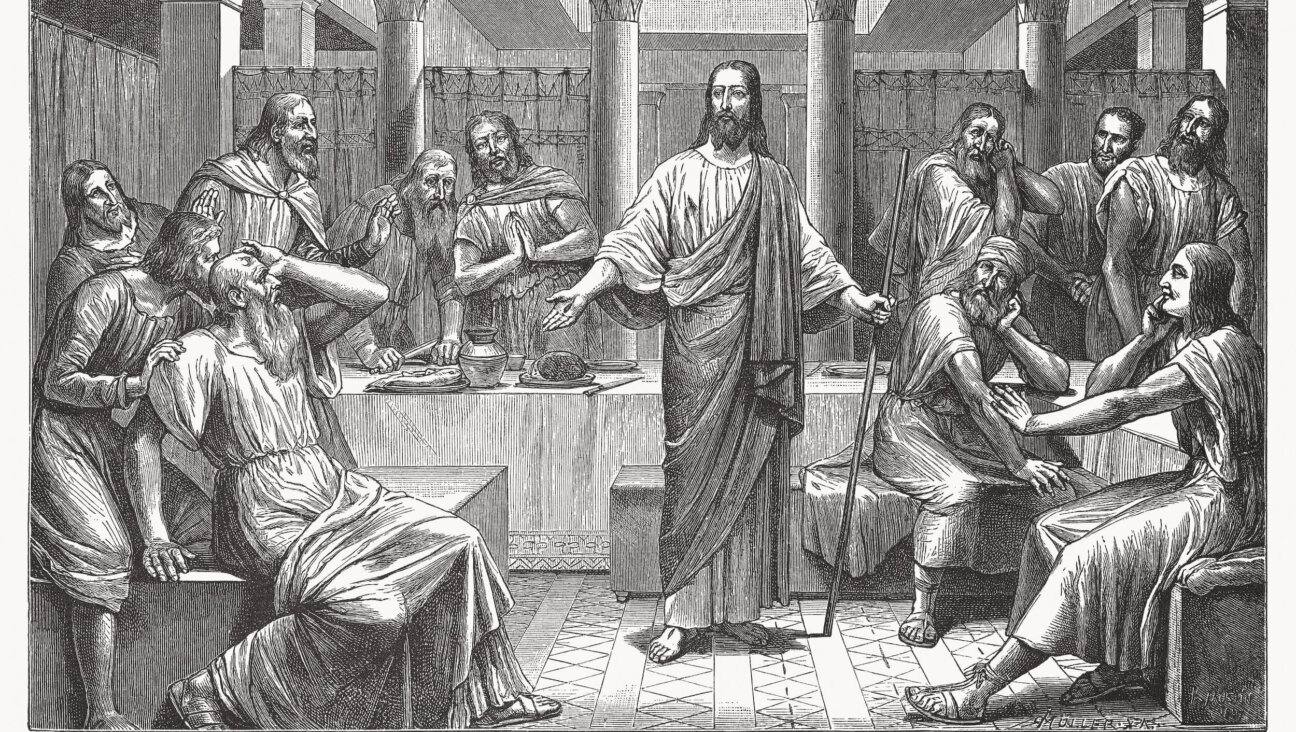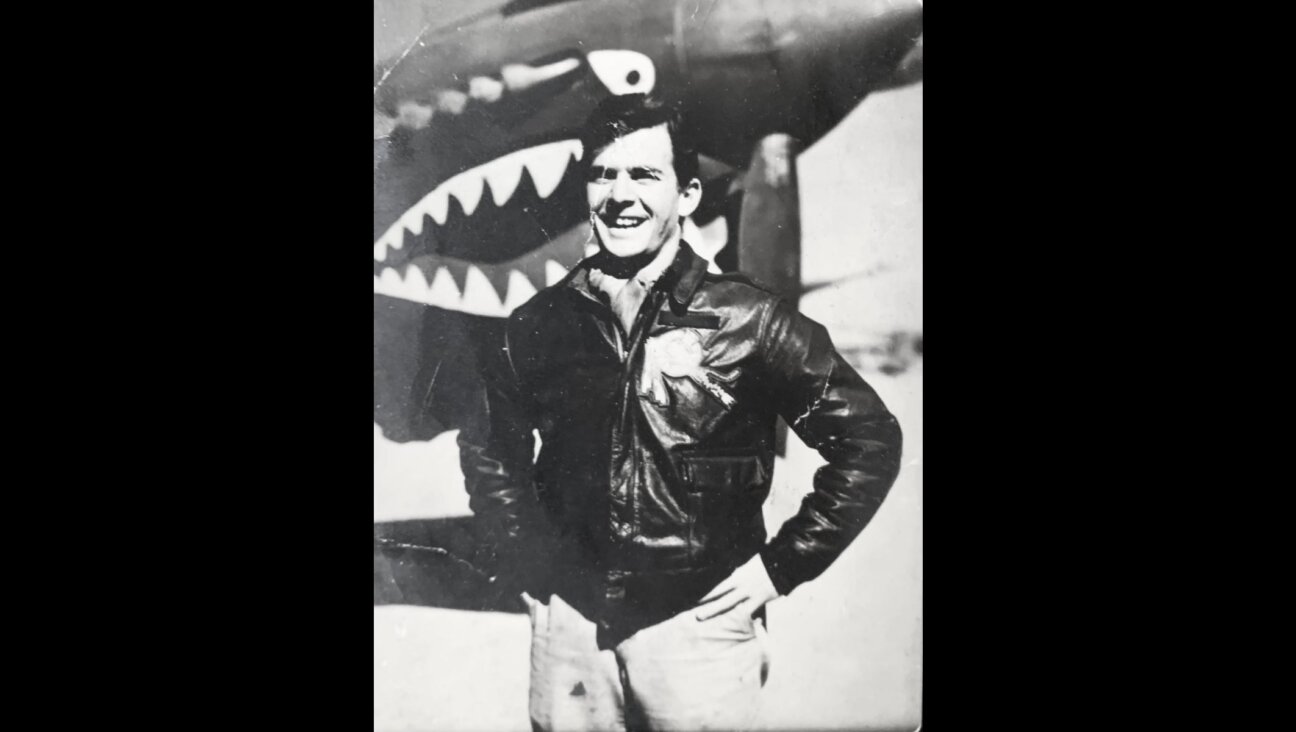What a Jewish view of repentance reveals about Jimmy Swaggart’s tearful confession
His televised ‘I have sinned’ speech became a cultural touchstone, but in Judaism, repentance isn’t a performance — it’s a process

Rev. Jimmy Swaggart’s famous “I have sinned” speech became a cultural touchstone. Graphic by Chorna Olena/iStock; KXAS-TV
Rev. Jimmy Swaggart died Tuesday at age 90, but the clip that survives isn’t of him preaching or playing gospel piano. It’s the one where he’s crying.
In 1988, Swaggart — then America’s most famous televangelist — had been caught with a prostitute in a New Orleans motel. In the months that followed, with his rivals gleefully anticipating his downfall, he took the pulpit one Sunday morning, face streaked with tears, voice cracking.
Gripping the sides of the podium, he turned to his wife, Frances, and said: “Oh, I have sinned against you, and I beg your forgiveness.” Pausing to sob, he went on: “I have sinned against you, my Lord.”
When he finished, the congregation rose in a standing ovation. Swaggart walked away from the pulpit and embraced his wife.
It was a moment of high drama — sacred and theatrical in equal measure — and it quickly became one of the most replayed religious spectacles of the television age. A man of God caught in moral collapse, and then, just as publicly, trying to atone his way back.
Swaggart was no small-town preacher. His sermons could fill arenas and reached a global audience. He led a multimillion-dollar ministry that included a cable network, gospel albums, and international crusades. He had a private jet. A mansion in Baton Rouge. He embodied not just the message of salvation but its material rewards. And his followers didn’t just believe in what he preached — they believed in him.
That made his fall all the more jarring. Especially because it came just months after he’d helped orchestrate someone else’s.
In early 1987, when fellow televangelist Jim Bakker was embroiled in scandal for using hush money to cover up an alleged sexual assault of church secretary Jessica Hahn, it was Swaggart who condemned him the loudest — calling Bakker “a cancer on the body of Christ.” Within a year, Swaggart was standing in the same shadow of shame, asking for the same mercy he had denied Bakker.
The Jewish view of repentance
As a Jewish kid watching in the South, I was mesmerized and confused in equal measure. I didn’t know if I was seeing a sermon or a soap opera. What I did know was that it was different from what I was taught about repentance.
In Judaism, confession — vidui — is a private act. You don’t cry in front of cameras. You don’t do it for applause. You do it quietly, directly, sincerely. On Yom Kippur, we whisper our wrongs together in the plural — we have sinned — because the burden is communal, not performative.
Catholics, too, tuck their confessions behind curtains. The entire ritual is built around discretion.
Swaggart’s confession was the opposite: confessional as spectacle. And while that may have been spiritually moving for some, it also revealed a profound difference in how faith traditions understand accountability.
There’s a quote often attributed to John Angell James, a 19th century preacher: “The repentance should be as notorious as the sin.” And in fairness, Swaggart’s repentance was notorious. The man had sinned in public. He had betrayed a congregation that trusted him not just to preach Scripture, but to embody it. His sin broke public trust — so maybe it made sense that his apology had to do the same in reverse.
But something about it always felt off.
Swaggart wept and apologized — but never named his sin. He spoke in the language of grand biblical vagueness — “I have sinned” — and let the tears do the rest.
As Maimonides wrote, public confession is praiseworthy when a person has wronged others — but when the sin is between an individual and God, going public can be a kind of spiritual arrogance. What matters most is the direction of repentance: toward the one you harmed, not the camera lens.
Swaggart’s sin may have straddled both realms — betraying his faith and violating the trust of the people who believed in him. In that sense, his public confession wasn’t entirely misplaced. But even then, the point of confession is accountability, not catharsis.
Some in his congregation forgave him. Others left, disillusioned. But the moment stayed with us — not just as a spectacle, but as a question mark. Because even in all its trembling sincerity, what we’d witnessed didn’t quite feel like teshuvah, the Jewish concept of repentance. It felt like very powerful image management.
Swaggart’s confession became a template. Politicians and public figures now offer contrition not just in private but on press tours and in prime-time interviews — tears carefully timed, messages thoroughly rehearsed.
But that’s not how real repentance works, at least not in Jewish thought. It’s not something you livestream. It’s a process. You name the wrong. You go to the person you wronged. You try to fix it. And then, the next time you’re faced with the same temptation, you choose differently.
Swaggart never made it that far. In October 1991, scandal found him again — this time when police in California pulled him over for driving erratically and discovered a prostitute in the car.
He sinned. He sobbed. He survived. But in his greatest moment of vulnerability, Swaggart taught a lesson he never meant to: that repentance, when staged for the masses, can start to resemble marketing. And that what gets lost in the tears is the one thing repentance requires most: humility.

















